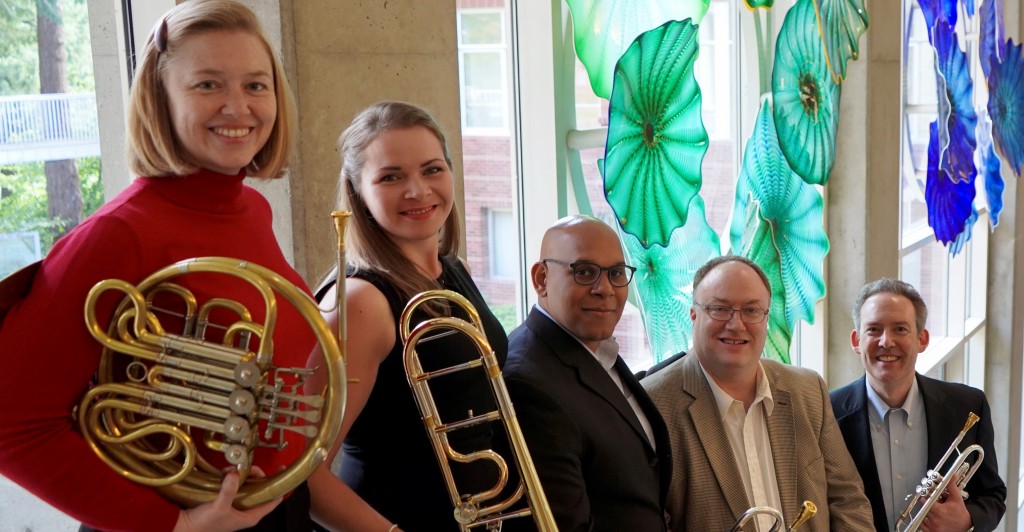Page 348 • (3,522 results in 0.095 seconds)
-
corresponding amounts can be found on our Named Endowments page. What can an endowment support? Is it just scholarships?You can endow much more than scholarships. Endowment options range from student scholarships to endowed professorships and chairs to student-faculty research. A full list can be found on our Named Endowments page. How is the endowment at PLU doing?Check out the Administrative Services page for information about the financial status of PLU. The Endowment value as of May 31, 2021 was $130.1
-
with new, one-time, and developing courses not yet available in the regular curriculum. The title will be listed on the student term-based record as ST: followed by the specific title designated by the academic unit. (1 to 4) GSRS 491 : Independent Study Readings, research projects, or service learning projects in areas of issues of gender, sexuality, and race studies, under the supervision of a faculty member. (1 to 4) GSRS 495 : Internship A pragmatic, employer-based experience in which students
-
theory and practice in a work situation. The title will be listed on the student term-based record as Intern: followed by the specific title designated by the instructor in consultation with the student. (1 to 4) HISP 499 : Culminating Experience - SR An opportunity for students to integrate learning objectives and demonstrate competence in Hispanic and Latino Studies through a research project, experiential learning placement, or combined project with a complementary major. With the guidance of a
-
peers to research, prepare, and present a strategic plan for a new innovation; By studying innovation, business, and the emerging global economy, students will be preparing themselves for future employment, study, and creative engagement with PLU’s core mission: to creatively inquire, serve, lead, and care — for other people, for their communities, and for the earth. Innovation Studies Curriculum The Innovation Studies minor combines PLU’s unique offerings in the liberal arts and the professional
-

appeared in period performances with the Madison Bach Musicians playing repertoire including Bach’s Mass in B Minor. Dr. Gillie’s doctoral dissertation is entitled “Twentieth and Twenty-First Century Music for Soprano, Horn and Piano: an Original Composition, Professional Recording, and Research of Significant Pieces.” Information and recordings from the project are featured on Dr. Gillie’s website. Rebecca Good, trombone, is Lecturer of Trombone at Pacific Lutheran University where she teaches
-

Latino Studies Lecture April 6 | 6:30 p.m. | Xavier 201 Dr. María Chávez, PLU Associate Professor of Politics and Government, will give a lecture titled “The Pioneers: The Role of Public Policies and Mentors for First Generation Latino Professionals.” Inaugural PLU Undergraduate Research Symposium April 8 | 9 a.m.-5 p.m. | Anderson University Center MORE INFORMATION Hitler’s Pink Victims: Robert Oelbermann and the Persecution of Homosexuals in Nazi Germany April 19 | 7:30 p.m. | Anderson University
-

, Microsoft Teams, and other tech—few had used it for everyday instruction. Virtual singing classes were soon on Brizuela’s schedule. “We were able to explore the music a little bit differently,” Brizuela says. “Last spring was definitely, ‘Let’s figure out how to make the students successful with the limited time and materials that we have.'” Students could practice research skills and sight-singing and record themselves. Essentially, activities often shunted aside when focused on concert deadlines
-
, predictable enrollment. Our student/faculty ratio is part of the decision about how best to accomplish our mission. We are currently at about 12.7:1, up from a low of about 12:3. For most of the last two decades, we have been at about 14:1. Personally, I don’t put much stock in student/faculty ratio as a measure of comparison between universities, since it doesn’t address the issue of teaching load. Many large public research universities have low student-faculty ratios, but they still have huge section
-

organizer, part life coach. “They make the whole experience more enjoyable and fluid,” Scheel said. “Like, if you went out on your own you might forget something, you might get into a situation where you’re not comfortable, or you might not know how to do the research to make a trip happen. That’s all on the shoulders of the trip leader.” McCracken and Scheel come up with a list of destinations before each semester and divide them among the trip leaders. A standard trip size is 12 people — 10 students
-
academic journey culminated in a passion for cultural revitalization. The seed that was planted with Hall’s initial research in college became a major part of her daily life. And it was on display this past summer on the Salish Sea and in the canoe journey camp at Chief Leschi School in Puyallup. This year’s host for the journey, which allows participating tribes to share and revitalize their native cultures, was the Puyallup Tribe of Indians. It’s the first time in 20 years the Puyallups have hosted
Do you have any feedback for us? If so, feel free to use our Feedback Form.


